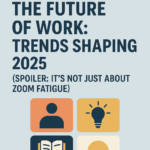The halo effect is a perception distortion that can manipulate our insight about an individual or a thing. It has a deeply rooted impact on our daily lives without us even being sensitive to it. If you want to get into the detail of what is the halo effect and how the halo effect has the power to influence our daily lives in terms of perception building, then read this article
Have you ever witnessed a celebrity you adore doing anything wrong? For example, actress Sandra Bullock had a startlingly nasty interaction with a fan a few years ago, which tarnished her reputation. According to reports, a veteran and Sandra’s admirer in a wheelchair approached the star and begged for her autograph.
Sandra Bullock, in response, hid her face and yelled curses at him after his request. Sure, she can’t accommodate every fan, but ranting at someone is no way to refuse a basic request like a signature. Her reaction toward her fan astounded the onlookers.
If you were a fan of the actress like we are, you might be stunned to hear about this. Although you’ve never met Sandra Bullock, you believed she was a decent person who would never act or say something like this. Additionally, if Bullock appeared less stunning and put together than she does on TV, you might be surprised. Since Sandra Bullock is a complete stranger to us, why are we so shocked by this?
The answer lies in the “halo effect,” a widespread cognitive bias in impression formation where one’s predisposition to let ideas or feelings about someone or something in one area affect those same opinions or feelings in other areas.
Investigating the halo effect may be helpful if you’re curious to understand more about the elements that influence social interaction. In this article, we explain what is the halo effect and the influence of the halo effect on our lives, as well as examine its operation in many contexts.
What is the halo effect?
At work, your supervisor seeks your opinion on whether Taylor, a colleague, would be a good team captain for a forthcoming project. Despite the fact that you don’t know Taylor very well, you think he is a tall and attractive man. So you immediately respond, “yes.”
This is due to the fact that your opinions on Taylor’s appearance have an impact on how you view him in other favorable contexts. These include shrewdness and leadership. Even though you are unsure whether Taylor would make a competent team leader, you unconsciously create these opinions.
You’ve probably heard that first impressions are important. The halo effect is demonstrated in the preceding example. It’s a psychological word that refers to a mistake in thinking based on a single attribute you know about another person or thing.
This can work in someone’s favor either positively or adversely, and it can apply to a variety of scenarios. In a nutshell, a perceived favorable or positive attribute of a person forms a “halo” of an overall perception of that same individual.
Another example worth talking about is using our politicians as an example; in making an effort to come out as approachable and friendly while expressing very little substantively, politicians take advantage of the halo effect. Since they seem like wonderful people, people are prone to believe what they say and do. Simple as that! As a result of our extreme attraction to one quality, we end up rating that individual extremely highly on numerous traits.
Understanding the Halo Effect
It is often seen that if a person possesses qualities like charm and leadership, it might be easier to connect them with other desirable traits. The halo effect is what causes people to engage differently with one another in a variety of settings.
Suppose we were to define the term “halo effect” scientifically. In that case, it refers to a typical human inclination in impression creation to presume that once a person possesses a particularly positive or negative feature, others of yet unknown qualities will also be favorable or negative, or, in other words, compatible with the existing image.
A person’s expectations regarding additional, as of yet unidentified attributes appear to be influenced by the way known personal features emit a favorable or negative aura (hence the name halo effect). Halo effects reflect the seeming assumption that both positive and bad traits follow predictable patterns.
One favorable trait in a person can lead to a positive inclination toward all of that person’s characteristics, and one lousy trait might lead to an overall negative perception of that person. The halo effect is the former, which operates positively; the horn effect, on the other hand, operates negatively, which we shall explore later.
History and development of the halo effect
The American psychologist Edward L. Thorndike first used the phrase “halo effect” in 1920. Thorndike’s observations of military leaders during tests where individuals “ranked” subordinates served as the basis for this theory.
Thorndike had the superiors rank the officers according to their character attributes before they had ever spoken to their subordinates. These included intelligence and shown leadership.
Thorndike concluded from the findings that the officers’ positive and negative qualities were based on unrelated traits connected to bodily perceptions.
For instance, a tall, handsome subordinate was seen as having the highest level of intelligence. He was also considered to be “better” than the others overall. Thorndike discovered that our overall perceptions of another person’s character are most strongly influenced by their outward look.
The general idea of Thorndike’s theory is that individuals tend to build an overall impression of someone’s personality or qualities based on one unconnected aspect. This might result in either favorable or negative perceptions. In either instance, such subjective judgments might have detrimental implications on your capacity to think critically about the person’s other features.
Thorndike’s work was developed by another psychologist, Solomon Asch. He hypothesized that the way people form judgments or adjectives about others mainly depends on first impressions. So, a solid initial impression of someone could suggest that you make optimistic assumptions about their talents and abilities. An unfavorable first impression may lead you to wrongly conclude that a person possesses negative characteristics such as laziness or apathy.
Why is it called the “halo” effect?
The term “halo” refers to a religious concept: a shimmering circle seen hovering above the heads of saints in numerous medieval and Renaissance artworks. The saint’s face appears showered in heavenly light from their halo.
As a result, observing that someone was painted with a halo indicates that they were a decent and worthy person. In other words, you’re moving your assessment from one easily visible attribute of the individual (painted with a halo) to a judgment about that person’s character.
It is pretty evident from here that the name has nothing to do with the video game Halo.
What causes the halo effect to exist?
The halo effect enables us to make quick decisions since we only need to consider one element of a person or object in order to “know” about all other features. In the time of the cave dwellers, there may have even been some validity to these quick conclusions: in order to grow tall, a person would have needed to consume a lot of meat, indicating that they were likely skilled hunters who were worth listening to.
Additionally, someone with good looks would have escaped deformity due to lost wars, animal bites, and dangerous diseases, which would again make them an example for other protohumans.
Early humans who could make snap judgments had a higher chance of surviving and evolving into our ancestors than those who had to spend hours considering every issue. Thus, we have inherited a propensity to draw (overly) broad conclusions based on a limited sample of data.
Why does the halo effect happen?
Human social perception is a positive process leading to the halo effect. We deliberately create an image that aligns with what we already know when we make impressions of others rather than just relying on objective knowledge. It is extremely remarkable that we occasionally judge someone’s personality based solely on how gorgeous they appear on the outside.
The role of “attractiveness” in the halo effect
Various things can influence the halo effect, but one of the traits that cause cognitive bias most frequently is someone’s attractiveness. Weight, hair color, and eye color are examples of physical characteristics that influence opinions of attractiveness. According to research, physical attractiveness may influence opinions about personality traits and life success. This shows the halo effect by indicating that views of attractiveness may affect several other attributes.
Halo effect in our daily lives
Even though the term “halo effect” may be something you just learned about today, it still affects almost all aspects of your daily life. The halo effect is silently embedded into our lives, and it affects each of the decisions we make every day regarding our perceptions of others and the things in our surroundings. Following are some of the ways the halo effect influences our lives
- Your workplace
- Schools
- People you find attractive
- How do you react to advertising initiatives
- Healthcare and medicine
- Websites
- Relationships
Halo effect at workplaces
Workplaces frequently experience the halo effect as well. You could presume a coworker in business attire has a strong work ethic. On the other hand, a coworker dressed casually can be assumed not to have the same work ethic, even if this could be absolutely untrue.
A similar impact was observed in educational institutes in terms of cognitive bias. One well-known university-level study examined how students felt about both a prestigious professor and a guest lecturer. Based on these titles, the students connected the better ranking academic with favorable traits that were just untrue, such as a taller height.
Schools
In schools, the ideas of first impressions, identification, and familiarity can all contribute to the halo effect. For instance, there is some proof from trusted sources that perceived attractiveness might result in better academic performance. However, other research disproves this correlation.
Another illustration relates to the possibility that name familiarity and higher academic achievement are linked. In one classic study, teachers graded essays written by fifth graders. Articles written by students with common, well-liked, and appealing first names received higher grades from the teachers than essays written by students with uncommon, unwelcome, or ugly names.
People you find attractive
It seems to make sense that the halo effect can affect how beautiful we appear to others because it primarily depends on initial impressions and physical appearance. For instance, the overused expression “love at first sight” frequently refers to a person’s appealing appearance, which may lead you to assume other favorite things about them.
Consider that you are in a café. You see someone dressed up here, and you think they look good. You could infer that they are witty, intelligent, and hardworking. Another person wearing workout attire might be at the same coffee shop. While they aren’t always as put together as the first person you see, you might still assume positive attributes about this stranger. You might assume that they are devoted, healthy, and content.
The next individual you encounter at the café looks as if they just got out of bed; their clothing is unkempt, and their hair is pushed back. This person might work harder than the first person and be fitter and happier than the second. However, you might think of them as careless, disorganized, and uninterested.
The Halo Effect: How It Drives Marketing Success
The halo effect impacts not only how we view individuals but also how we perceive brands and products. When you have a positive image of a brand, you’re more likely to buy its products, even if your positive view is unrelated to the product itself.
In marketing, the halo effect is a cognitive bias where favorable brand experiences lead to increased customer preference and loyalty. Marketers leverage this effect by associating their products with positive attributes or influential figures. For instance, celebrity endorsements often make us more inclined to purchase products they promote, regardless of the product’s actual quality.
A notable example is Kendall Jenner’s endorsement of the Fyre Festival. Despite the festival’s poor execution, Jenner’s association helped her earn $250,000 and drew people in based on her positive public image.
Additionally, how products are labeled can significantly affect their perceived value. Studies show that items labeled “organic” receive higher ratings and customers are willing to pay more for them compared to “conventional” products.
Marketers skillfully use the halo effect to enhance brand perception and influence purchasing decisions. Understanding this effect can help consumers make more informed choices and recognize how brand image can affect their buying behavior.
Healthcare
Unfortunately, the halo effect can occur in the medical industry as well. For instance, a doctor might make a diagnosis based solely on a patient’s appearance without first ordering any tests.
Additionally, a person’s appearance can be used to determine their state of health. For instance, you might think someone who exudes a “healthy glow” is content. It’s possible that this is true or not.
You can mistakenly believe that someone who is thin has immaculate health or vice versa. According to a reliable source’s literature analysis, “attractiveness decreases the accurate recognition of health.”
Websites
The halo effect can affect organizations, places, things, delivery/communications methods, and other people’s opinions. Users are more likely to view a website favorably in the future if they enjoy one component of it.
In contrast, visitors will be reluctant to return to a website if they have a particularly negative experience there since they will assume that the website will also treat them poorly going forward. In the latter scenario, users would still have negative expectations from their earlier experience even if the site is later improved. Similarly, if creating an account for a service is excruciatingly difficult, people’s expectations for the rest of the service will be negatively impacted.
It can be concluded that as drop-offs at any point in your visitors’ experience may signal a negative first impression due to design, content, site performance, and other factors, it is crucial to keep the halo effect in mind as you build sites, create flows, define key performance indicators (KPIs), and measure your site.
Relationships
The Halo effect might cause us to perceive our partners as more attractive, kind, and honest than they actually are. However, if we are conscious of this bias, we can take steps to mitigate it and make more informed decisions regarding our relationship. Recognizing the Halo effect in other interactions can also help us avoid building false perceptions of people.
How can cognitive bias be recognized?
It might be challenging to distinguish between prejudices and facts because of the halo effect’s pervasiveness in our daily lives. But by actively working toward having more objective thoughts about others, you can actively attempt to reduce such subjective beliefs. It’s beneficial to take your time thinking because the halo effect postulates that individuals make snap judgments about others based on their outward appearance.
We previously discussed your hypothetical coworker Taylor and how your supervisor questioned you about his leadership capacity. Tell your supervisor to wait a day before responding so you can thoughtfully consider their suggestion rather than reacting right away. After that, you can also think about asking Taylor if he’d be a good team leader. You can avoid the possible adverse side effects of the halo effect by taking your time and acquiring all the information.
Why is being aware of the halo effect important?
Understanding the halo effect can help us better comprehend how it impacts our daily lives. You should consider how your impressions of someone might alter how you evaluate their other qualities, whether trying to judge them or choosing a political candidate to support or a movie to watch. Understanding the halo effect can help us make more objective decisions, even while it does not entirely remove bias from our lives.
How can the halo effect be avoided?
John Marconi’s book “Reputation Marketing” claims that books with “Harvard Classics” written on the front can make twice as much money as the same book without the Harvard endorsement. The fashion business operates similarly. A straightforward pair of jeans can be marked up significantly by adding a well-known fashion designer’s name.
Due to these reasons, the halo effect is somewhat manipulative, and the effect needs to be minimized so that we are deceived the least, especially in terms of marketing, so that we can save our precious hard-earned cash. There are various ways we can try to prevent the bias, even if the halo effect may appear like an abstract idea that can be pretty difficult to observe actively.
Cognitive debiasing
One can use various cognitive debiasing strategies, like slowing down one’s thought process, to reduce the impact of the bias. If you are aware of the halo effect, for instance, you can strive to form two impressions of someone when you first meet them to lessen the impact of prejudice. You will eventually be able to decide which initial impression was closer to how you have come to view the individual after learning more about them.
The halo effect extends beyond how we perceive others. It may influence how we assess things like products and brands. For instance, even if your opinion of a brand has nothing to do with the quality of the products, you will be more inclined to purchase items from that brand if you have a favorable view of it. When making a purchase, you should always keep your bias in mind because sometimes the greatest brand for you may not be the most well-known or extensively advertised.
The horns effect
While the halo effect should always be kept in mind, it’s equally important to be mindful of the horns effect, which occurs when the bias operates in reverse. Due to this cognitive bias, when we get a wrong impression of someone or something, it tends to affect how we see them in other situations. For instance, even if a product may offer them a benefit, if they do not like the way it appears, they will not purchase it.
Additionally, there are differences between the horn effects and the halo effect’s results. An individual who experiences the halo effect may win attention and respect, but an environment where this phenomenon frequently occurs may not be as effective or cohesive.
The halo effect can be helpful in marketing and promotional circumstances, but avoiding it at work might promote better teamwork and collaboration. It can be beneficial to steer clear of the horn effect at work because it can lead to unfavorable perceptions and difficulty sharing positive information.
Conclusion
The halo effect often skews our long-term views of others. This bias can distort perceptions, making it challenging to fairly evaluate people over time. Because human behavior is complex, we may find evidence to support initial assumptions made from minimal information. This can lead to self-fulfilling prophecies where initial biases persist and influence future judgments.
In both personal and professional settings, the halo effect can have significant consequences. For instance, being late, messy, or unorganized might lead to negative perceptions of other traits. These snap judgments can unfairly shape how others view your character.
To counteract this, focus on highlighting positive aspects when others have limited knowledge of you. Avoid sharing negative details that could skew perceptions.
Next time you vote, shop for high-end products, or evaluate someone, consider if the halo effect is influencing your decision. Are you judging based on specific qualities or being swayed by a general impression? This awareness can help you make fairer choices, avoiding poor decisions and missed opportunities.












